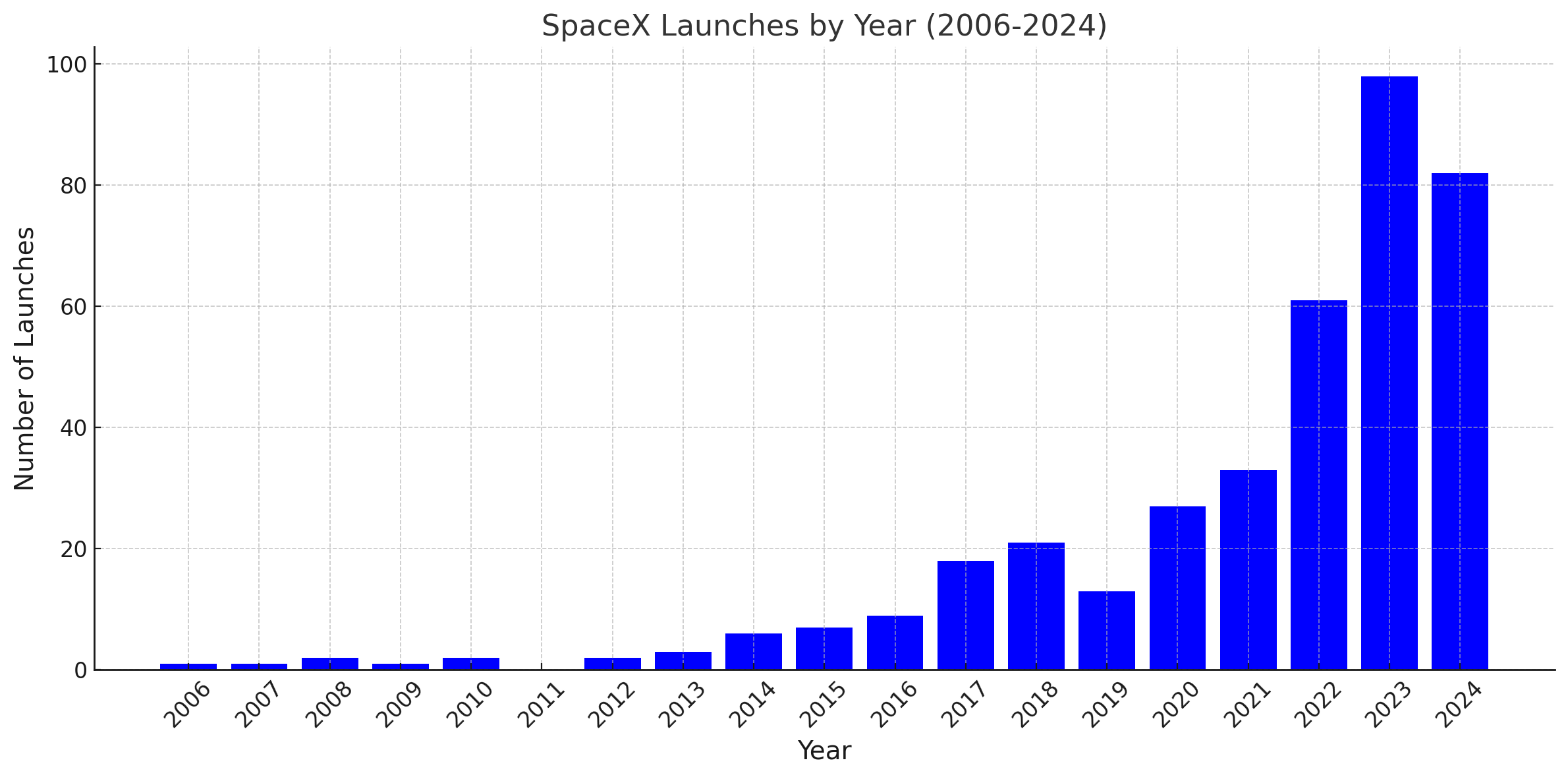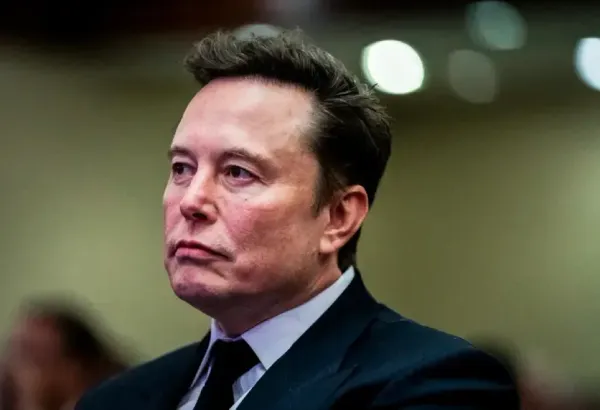SpaceX Leads as BEAD Opens Doors for LEO Satellite Technology
As SpaceX leads in orbital launches, the $42.5B BEAD program could further bolster its role in global broadband expansion.
Jericho Casper

WASHINGTON, August 27, 2024 – SpaceX is set to deliver nearly 90% of all cargo – satellites, spacecraft, and equipment – launched into Earth's orbit this year, according to a statement from owner Elon Musk on his X microblogging platform Monday.

Most recently, the company launched 22 Starlink satellites into low-Earth orbit last Tuesday from Cape Canaveral Space Force Station in Florida. As part of the company’s ongoing effort to provide global internet access, these satellites joined SpaceX’s existing network of over 6,800 high-speed internet satellites, more than 5,200 of which are currently operational.
“SpaceX is doing a major launch every ~3 days now; expecting a launch every ~2 days in 2025,” Musk said in his X post. The data Musk quoted on X showed a sharp rise in SpaceX launches from 2020 onwards, culminating in an impressive 98 launches in 2023 and already 82 in 2024 as of August 26.
SpaceX's competitors are struggling to keep pace with its aggressive launch schedule. OneWeb announced a goal to deploy around 648 satellites in LEO, but currently has only about 634 in orbit, leaving them short of their target. Amazon’s Project Kuiper, which planned to launch a constellation of over 3,000 LEO satellites, has yet to launch its first satellite. Similarly, a project proposed by Boeing remains in the planning and development stages.
Nevertheless, the LEO satellite market remains poised for significant growth, projected to expand from $12.6 billion in 2024 to $23.2 billion by 2029, at a 13.0% Compound Annual Growth Rate, according to a report by Research and Markets. This surge is partly driven by regulatory pressures, like the FCC license issued to Amazon, which stipulated that half of its satellites must be in orbit and operational by July 30, 2026, with the remainder by July 30, 2029.
This forecasted growth suggested that, despite present growing pains, satellite technology may become increasingly attractive to industries and residents seeking high-speed internet, especially in areas where traditional deployment can be prohibitively expensive.
Starlink now offers near-complete coverage across most of North America, South America, and Europe, providing minimum speeds of 40 Megabits per second (Mbps) according to its coverage map.
This broad reach has made the technology eligible for funding under the current $42.45 billion federal broadband expansion initiative being overseen by the National Telecommunications and Information Administration.
Just Monday, the NTIA published draft guidance on how states can fund alternative technologies, like LEO satellites, for hard-to-reach areas in the U.S. where traditional broadband deployment can be too costly, under the Broadband, Expansion, Access, and Deployment program.
“For a small percentage of locations, in the hardest-to reach-parts of the country, a “reliable broadband” provider will not be available, or it will be too costly to deploy. In these limited circumstances, states can choose to fund projects using an alternative technology,” the NTIA said.











Member discussion